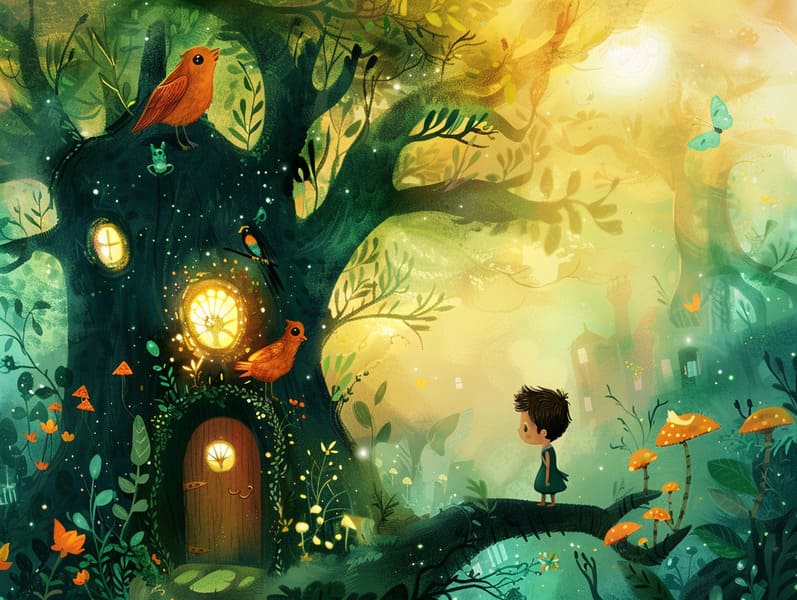The Origins of Online Fairy Tales and Its Enduring Grandeur.
The Origins of Online Fairy Tales and Its Enduring Grandeur.
Blog Article

Popular fairy tales have enduring presence. These narratives have been shared from one generation to the next long before they were ever inscribed. They came from a variety of cultures, including Indigenous traditions. They were initially passed along among mature audiences, often carrying themes and messages mirroring the societal norms and beliefs of the time.
The Grimm brothers, the two Grimm brothers, were among the first to gather many of these beloved tales. Their volume, "Grimm's Fairy Stories," included tales like "Ashenputtel," "Hansel and Grethel," and "Snow White," which have since become essentials in the world of famous fairy tales. Similarly, Hans Christian Andersen's imaginative tales, such as "The Story of the Little Mermaid," and "The Ugly Duckling," have floated into hearts worldwide, securing their place in the pantheon of beloved fairy tales.
Though they are centuries old, classic fairy tales remain as relevant as ever, especially as kids' bedtime tales. These whimsical stories are now available in different formats, including richly illustrated books, enchanting animations, and online fairy tales.
Their lasting presence can be attributed to several enchanting factors:
Moral Lessons: Ancient fairy tales often share important moral lessons. Tales like "The Tale of the Boy Who Cried Wolf" teach the virtue of honesty, while "The Story of the Tortoise and the Hare" show the virtues of steadfastness and humility. These narratives offer kids clear distinctions between virtue and vice, building their moral compass in a gentle yet meaningful way.
Compassion and Knowledge: Timeless fairy tales frequently include protagonists facing obstacles and hardships, fostering readers to identify with their struggles and back their triumphs. For instance, "The Story of Beauty and the Beast" teaches us the virtue of seeing beyond the surface to acknowledge the real character of a person, fostering sympathy and knowledge.
Cultural Knowledge: Many ancient fairy tales are rich in the cultural contexts from which they bloomed. Reading these stories can provide intriguing perspectives into different heritages, fostering a sense of global respect and discernment.
Inventiveness and Fantasy: The magical elements in traditional fairy tales—enchanted forests—invigorate children’s imaginative ideas. These stories lead readers to extraordinary realms, kindling inventive ideas and a sense of fascination that persists a lifetime.
Ancient fairy tales are not only charming but also pedagogical. They act as whimsical tools in cultivating various mind and heart abilities in fairy tales for kids young ones. When classic fairy tales are voiced, they promote verbal skills by teaching new phrases and elaborate sentence structures. This practice also improves auditory perception and attentiveness, as little ones pay close attention, expectant to see what happens next.
Furthermore, debating the themes and characters of timeless fairy tales can promote reasoning skills and analytical skills. Kids are shown to discover patterns, expect results, and catch on to cause and effect. These explorations also contribute to kids say their thoughts and feelings, enhancing their emotional intelligence.
In today’s cyber age, the existence of free fairy tales online has made these stories more attainable than ever. Web platforms and applications extend ample collections of traditional fairy tales that can be experienced or listened via anytime, anywhere. Fairy tales voiced are particularly widespread, providing an engaging way for little ones to delight in these fantastical tales. Audio stories and read-out-loud videos guide characters and settings to life, often augmented by spellbinding music and background music that improve the tale experience.
The enduring charm of traditional fairy tales lies in their ability to modify to current eras while keeping their key morals. Contemporary modernizations of these narratives often introduce more inclusive figures and modern settings, making them accessible to today’s audience. However, the main ideas of gallantry, kindheartedness, and truth remain unchanged, continuing to touch young readers of all ages.
Timeless fairy tales also offer a sense of assurance and understanding. They supply a organized narrative with a obvious beginning, middle, and end, often coming to a close with the solving of conflicts and the triumph of right over wrong. This foreseeability can be relieving for children, giving a sense of steadfastness in an ever-changing world.
Timeless fairy tales continue to delight and guide new generations, maintaining their elegance and impact in modern society. As bedtime stories for kids, they present a perfect blend of wonder and wisdom, nourishing moral values, empathy, and creativity. The abundance of digital fairy tales and the favor of fairy tales spoken guarantee that these ancient stories remain available to new generations.
By maintaining and disseminating these stories, we continue to admire the rich tapestry of cultural legacy and cultural heritage. Whether you are accessing a gorgeously illustrated book, discovering a internet library, or playing an read-aloud story, the fascination of bedtime fairy tales is always within reach. These tales demonstrate of the everlasting presence of storytelling and its ability to unify us across time and space.
Regardless if you are delving into a gorgeously illustrated book, experiencing a web-based collection, or listening via an audiobook, the allure of famous fairy tales is always within reach.
These fairy tales remind us of the timeless impact of stories and its ability to tie us across time and space, establishing a link that charms and informs alike.